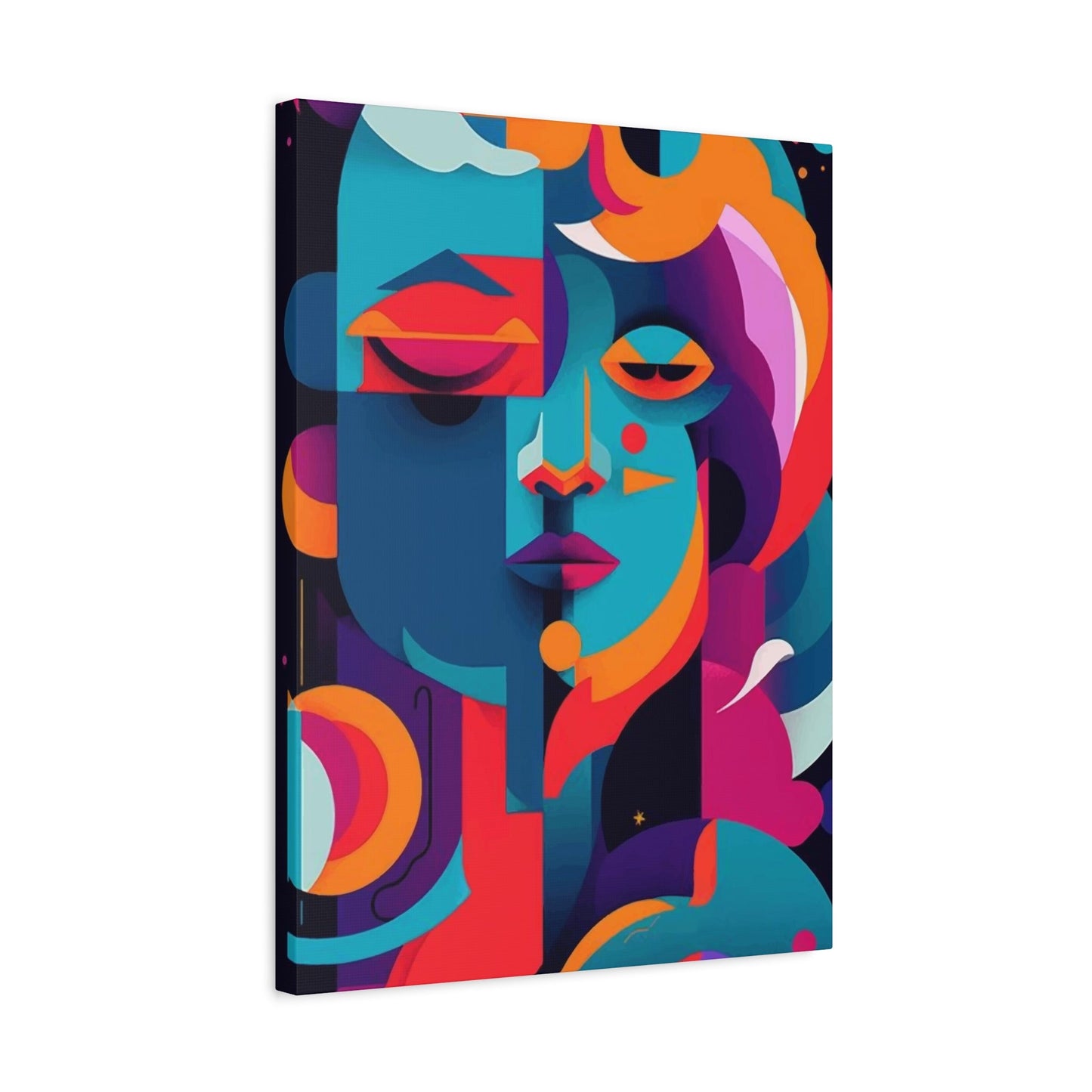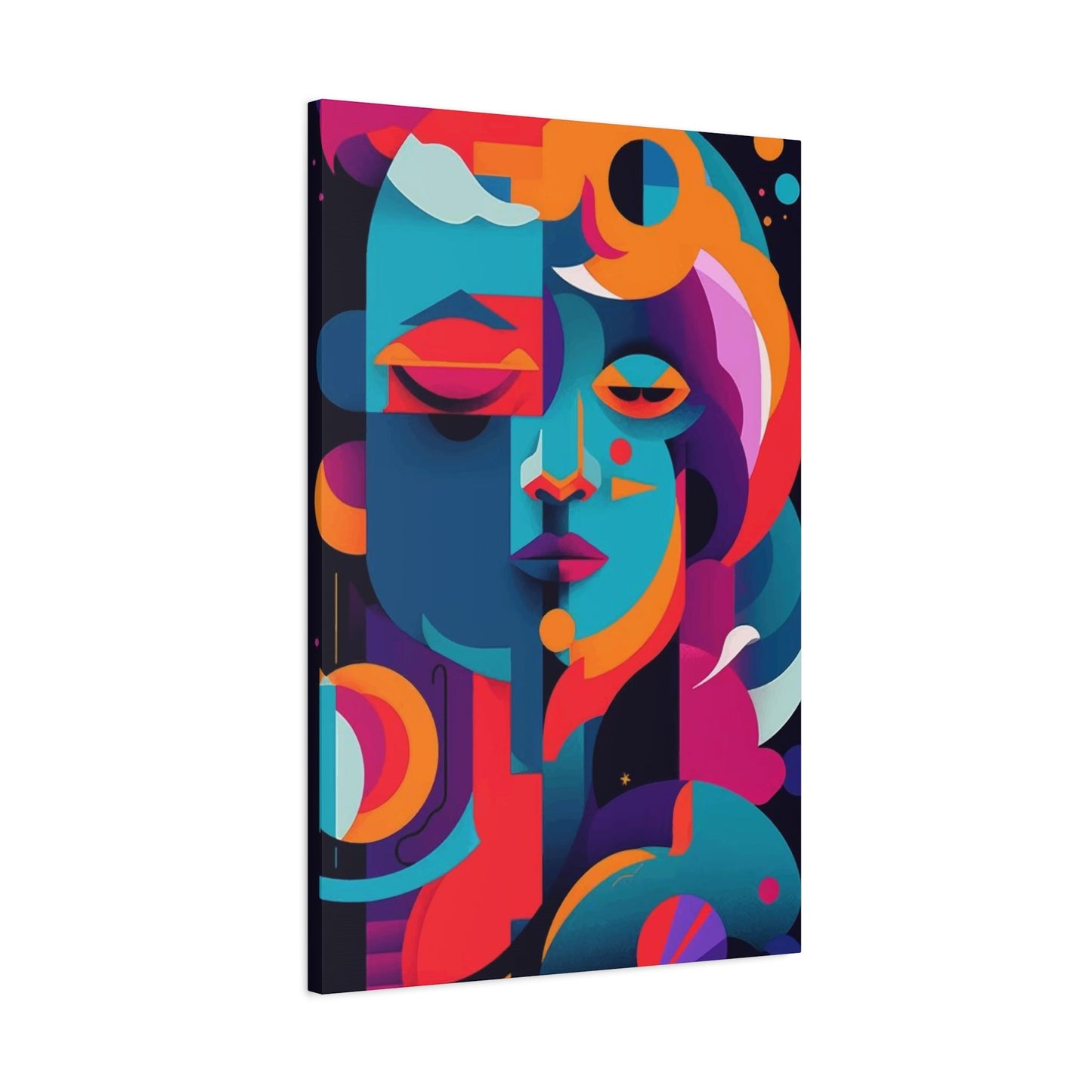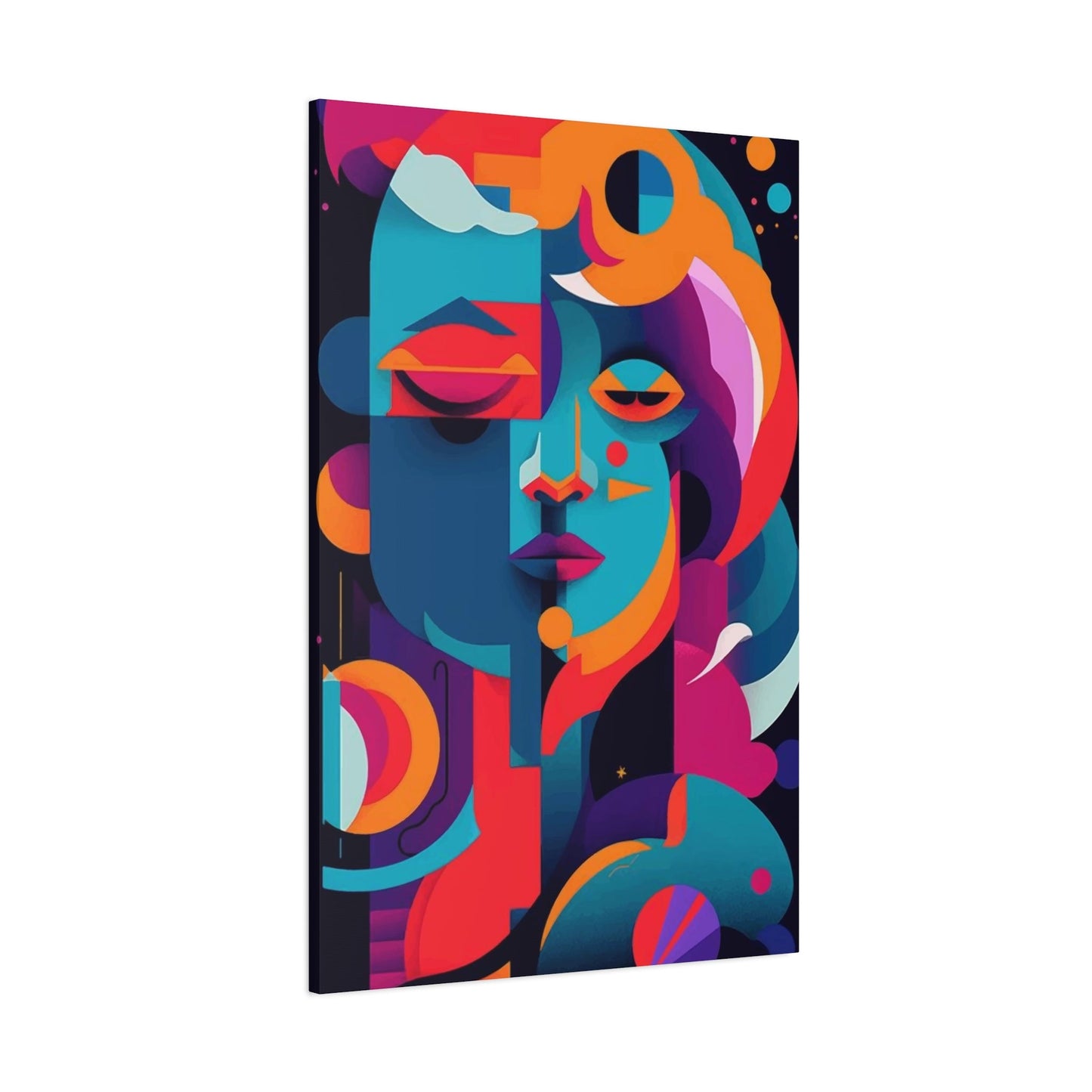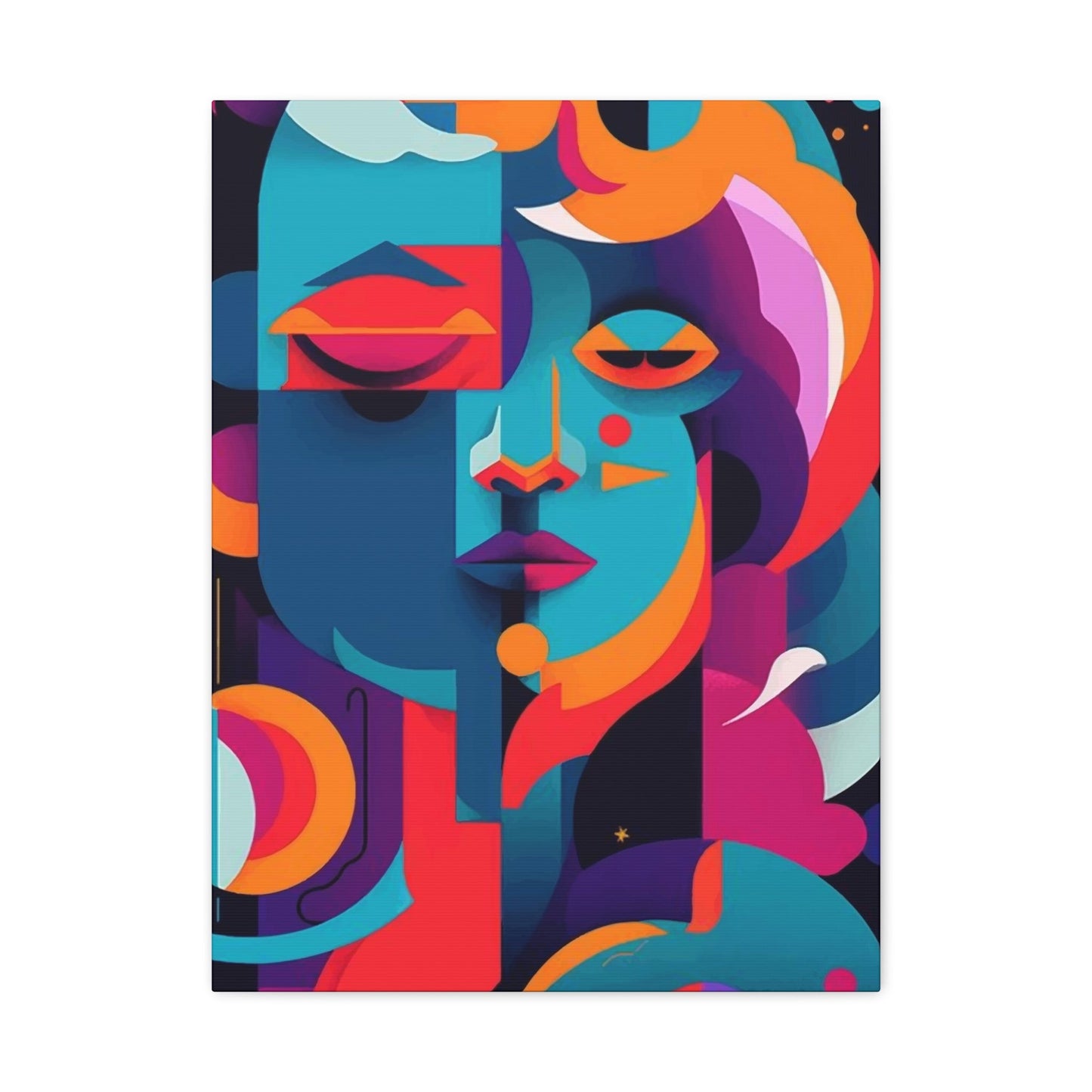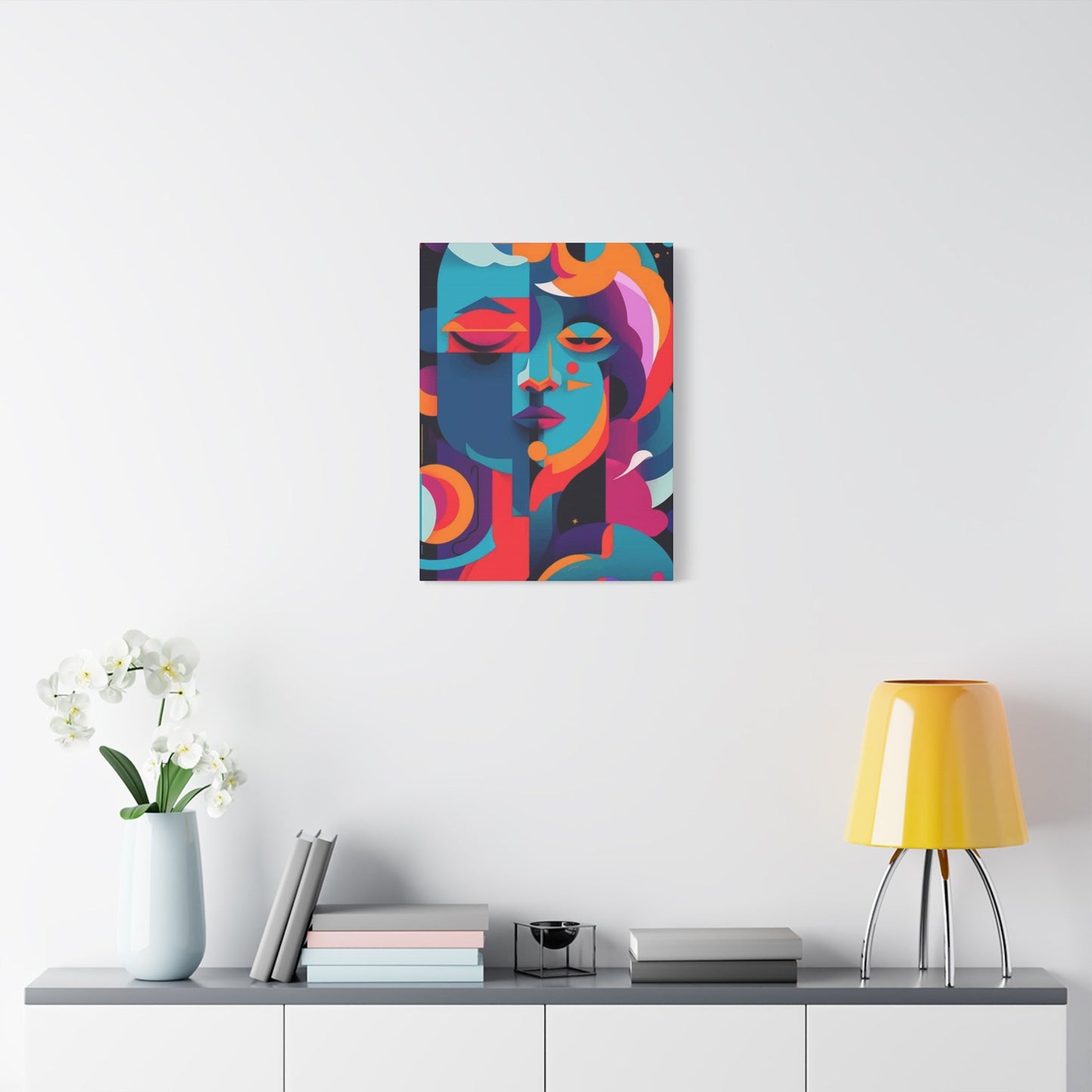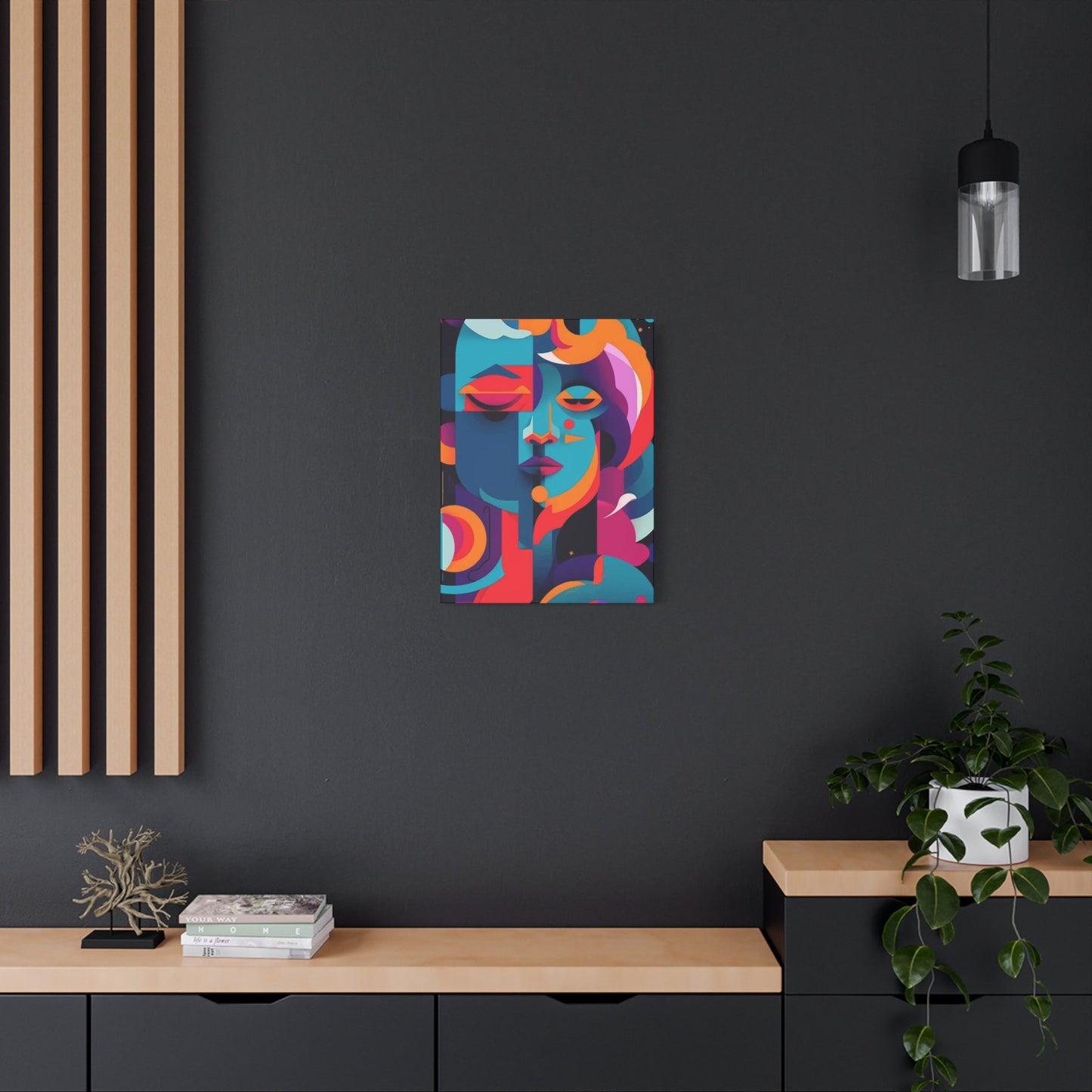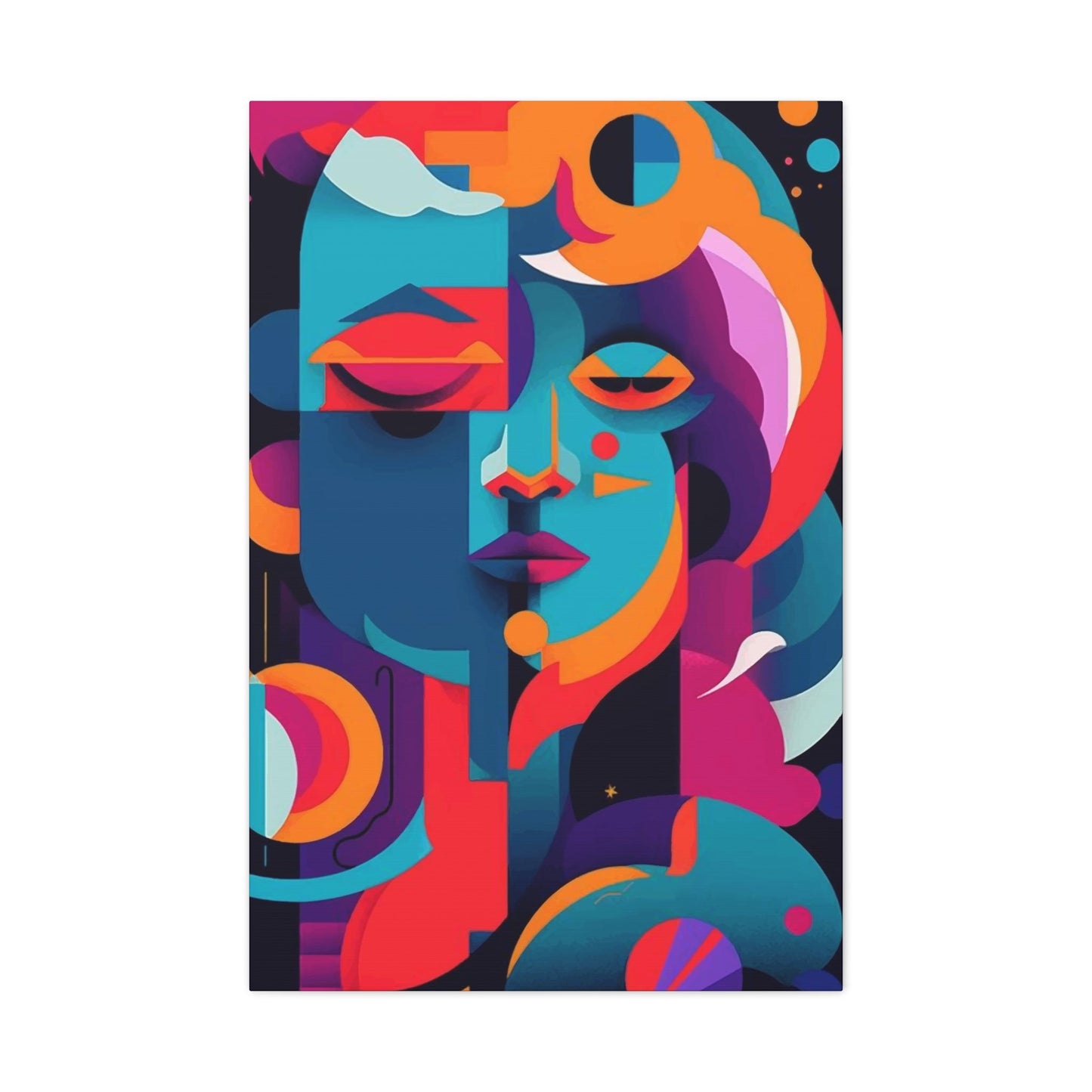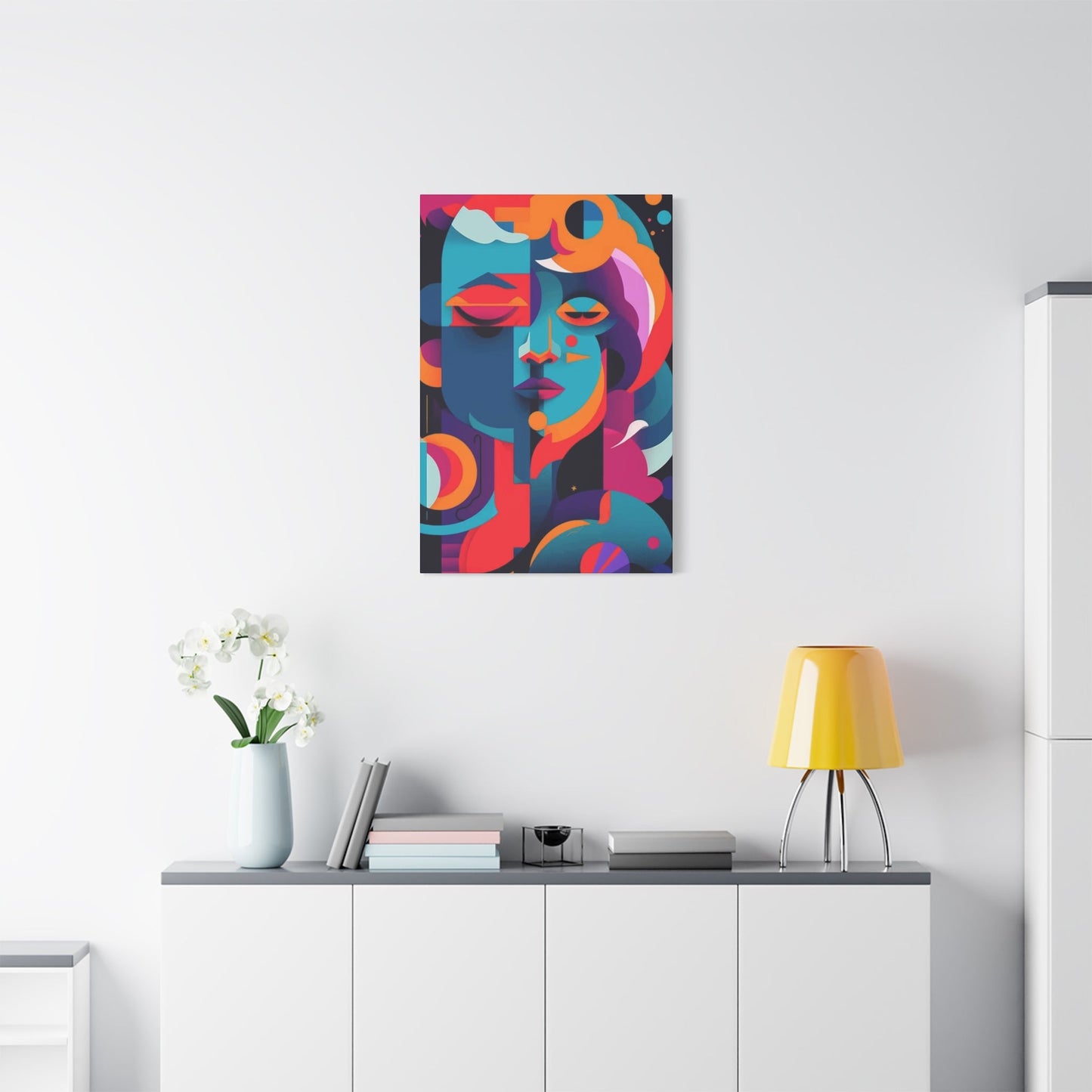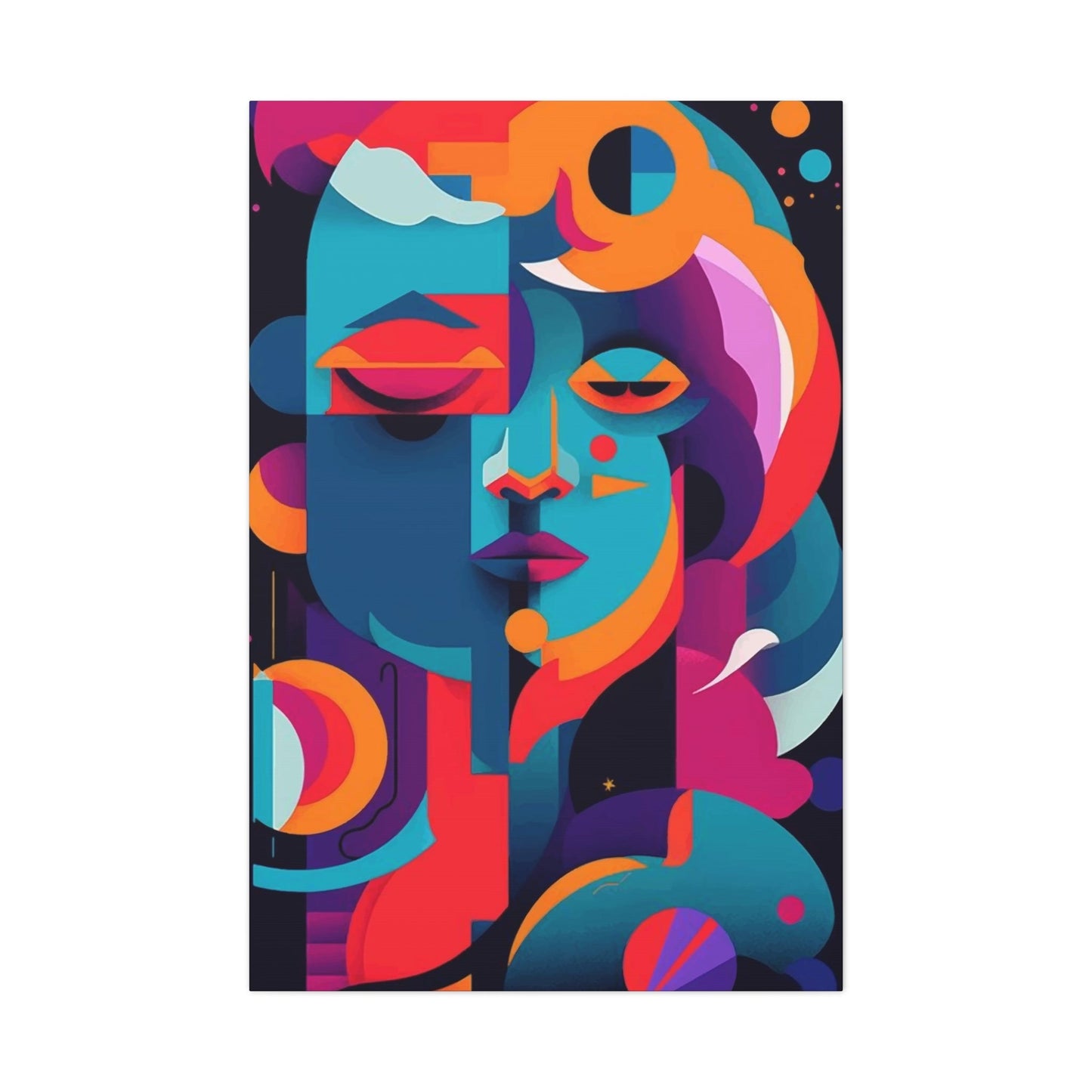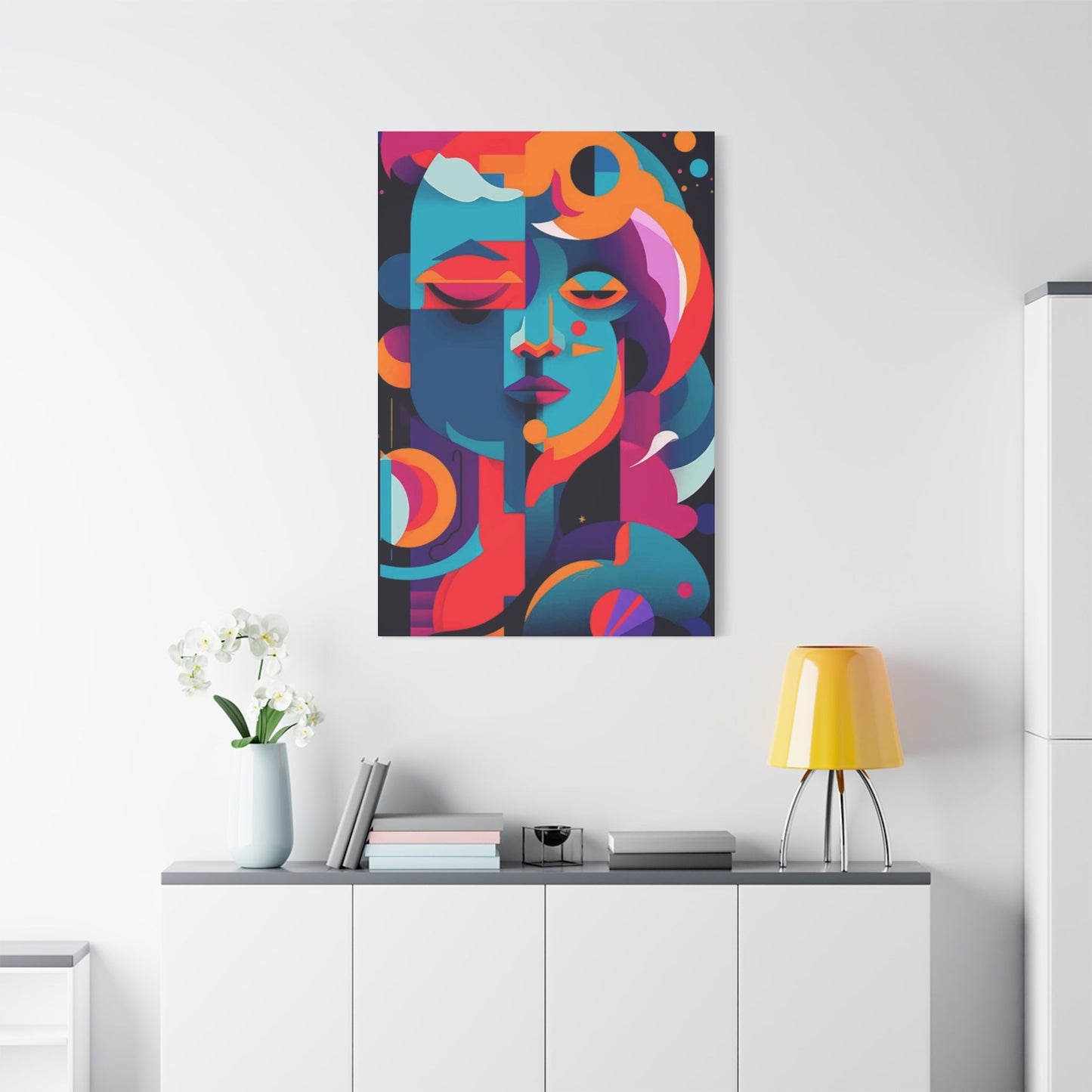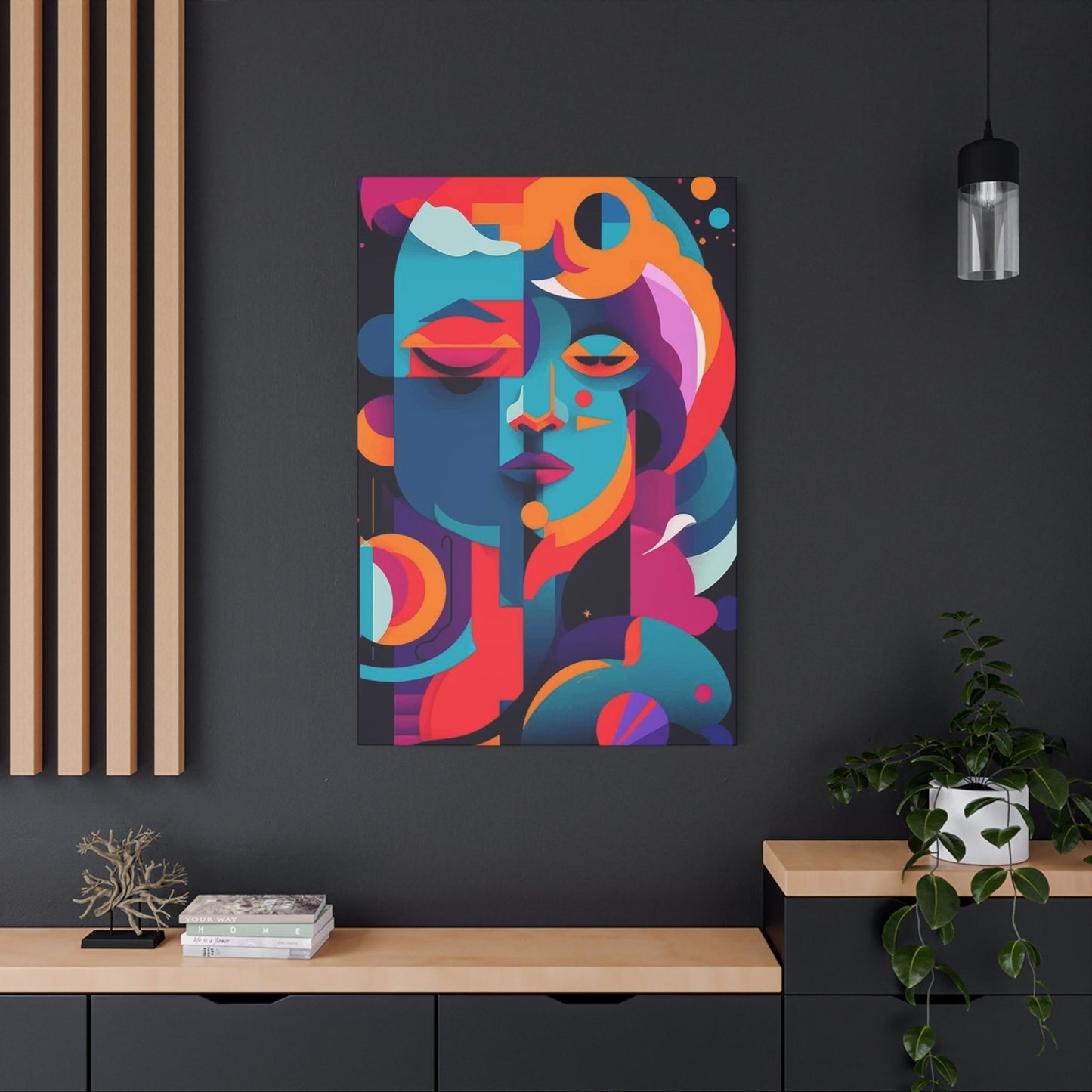Incorporating Modern Wall Art into Scandinavian Interiors
Contemporary wall art has revolutionized how we approach home decoration, offering endless possibilities to express personal style and create visually stunning environments. When it comes to Scandinavian interiors, modern wall art plays a pivotal role in enhancing the clean, minimalistic aesthetic while adding warmth and character to the space.
Scandinavian design is known for its simplicity, functionality, and connection to nature. The hallmark white walls, natural wood elements, and neutral color palettes create a calm, inviting atmosphere that serves as the perfect canvas for modern wall art. Incorporating contemporary pieces into this style doesn’t mean overwhelming the space; rather, it’s about selecting art that complements the understated elegance of Scandinavian interiors.
Popular choices include abstract prints, black-and-white photography, or minimalist line art that echoes the simplicity of Scandinavian design principles. Pieces that feature natural motifs—such as trees, mountains, or water—help reinforce the connection to nature, which is central to the style. Additionally, art with subtle pops of color can inject vibrancy without disrupting the room’s overall serenity.
Placement and framing also matter. Clean, simple frames in natural wood or matte black maintain the room’s cohesive look, while strategic placement above furniture or in gallery-style arrangements can add visual interest and balance.
Leading Contemporary Wall Art Movements Shaping Today's Homes
The landscape of contemporary wall art continues to evolve, reflecting cultural shifts, technological advances, and changing aesthetic preferences. Current movements emphasize clean lines, bold statements, and innovative materials that challenge traditional notions of what constitutes meaningful artistic expression.
Digital art has emerged as a dominant force, with artists creating stunning pieces using advanced software and printing techniques that produce museum-quality results. These works often feature vibrant colors, complex layering, and dynamic compositions that would be impossible to achieve through traditional mediums. The accessibility of digital creation tools has democratized art production, allowing emerging artists to experiment with styles and techniques that were once exclusive to established professionals.
Photography-based art continues to gain popularity, particularly pieces that blur the line between reality and abstraction. Contemporary photographers manipulate images through various techniques, creating surreal landscapes, distorted portraits, and conceptual compositions that challenge viewers' perceptions. These works often incorporate multiple exposures, digital manipulation, and experimental printing processes to achieve unique visual effects.
Mixed media approaches combine traditional and modern techniques, resulting in textured pieces that add dimensional interest to wall displays. Artists incorporate materials like metal, fabric, wood, and recycled elements to create works that extend beyond the flat picture plane. These three-dimensional qualities create shadow play and visual depth that changes throughout the day as lighting conditions shift.
Sustainability has become a crucial consideration in contemporary art creation, with many artists focusing on eco-friendly materials and processes. Recycled materials, natural pigments, and sustainable printing methods are increasingly common, appealing to environmentally conscious consumers who want their artistic choices to reflect their values.
The influence of street art and urban culture continues to shape contemporary wall art, bringing bold graphics, social commentary, and rebellious aesthetics into refined home environments. These pieces often feature strong contrasts, provocative imagery, and cultural references that create conversation pieces and reflect current social movements.
Contrasting Approaches: Subtle Elegance Versus Dynamic Expression
The contemporary art world presents two primary philosophical approaches that cater to different aesthetic preferences and lifestyle needs. Understanding these contrasting styles helps homeowners make informed decisions about which direction best suits their personal taste and living environment.
Subtle elegance emphasizes restraint, focusing on clean compositions with limited color palettes and refined execution. This approach prioritizes negative spaces, allowing the eye to rest and appreciate the subtle interplay between elements. Monochromatic schemes, gentle gradients, and understated textures characterize this style, creating a sense of calm sophistication that complements rather than dominates the surrounding environment.
Works in this category often feature organic forms, soft geometries, and neutral tones that harmonize with existing furnishings and architectural elements. The goal is to enhance the overall atmosphere without creating visual competition or overwhelming the viewer with excessive stimulation. These pieces work particularly well in bedrooms, meditation areas, and professional environments where tranquility and focus are priorities.
Dynamic expression, conversely, embraces bold statements through vivid colors, dramatic contrasts, and commanding compositions. This approach seeks to energize and inspire, using art as a focal point that anchors entire room designs. Saturated hues, complex patterns, and large-scale formats characterize this style, demanding attention and creating memorable visual experiences.
Artists working in this mode often incorporate multiple colors, layered compositions, and high-contrast elements that create visual tension and excitement. The resulting pieces serve as conversation starters and statement pieces that reflect the owner's confidence and willingness to take aesthetic risks. These works excel in entertainment areas, creative workspaces, and any environment where energy and inspiration are desired.
The choice between these approaches often depends on personal temperament, lifestyle factors, and the intended function of the decorated area. Some homeowners prefer consistency throughout their living environments, while others enjoy creating variety by incorporating both approaches in different rooms or combining them within single displays.
Modern collectors increasingly appreciate the value of both philosophies, recognizing that different situations call for different artistic approaches. A well-curated home might feature subtle pieces in private relaxation areas while showcasing bold works in public gathering areas, creating a dynamic journey through varied aesthetic experiences.
Strategic Placement Techniques for Maximum Visual Impact
Successful integration of contemporary wall art requires careful consideration of placement strategies that maximize both aesthetic appeal and functional benefits. The relationship between artwork and its surroundings significantly influences how pieces are perceived and appreciated.
Height placement represents one of the most crucial factors in effective art display. The standard recommendation places artwork centers at 57 to 60 inches from the floor, approximating average eye level for most viewers. However, this guideline must be adjusted based on ceiling height, furniture arrangements, and viewing angles. In rooms with high ceilings, slightly elevated placement can create more dramatic proportions, while lower placement might be appropriate in intimate seating areas.
Lighting considerations dramatically affect how artwork appears throughout different times of day. Natural light sources can enhance certain colors while washing out others, making it essential to observe potential placements during various lighting conditions. Artificial lighting options, including track lighting, picture lights, and strategically placed lamps, can be used to highlight specific pieces and create consistent viewing experiences regardless of external conditions.
Proportional relationships between artwork and surrounding elements require careful calculation to achieve visual harmony. Large walls can accommodate multiple pieces or oversized single works, while smaller areas benefit from appropriately scaled selections that complement rather than overwhelm the available visual real estate. The furniture below artwork should relate proportionally, with piece widths typically spanning 60 to 75 percent of the furniture width below.
Color coordination involves more than simple matching; successful schemes consider undertones, temperature relationships, and emotional responses. Cool-toned artwork can create calming effects in bedrooms and bathrooms, while warm tones energize social areas like dining rooms and family rooms. Neutral pieces offer versatility but may require additional color elements in surrounding décor to prevent monotonous appearances.
Traffic flow patterns influence optimal placement locations, with high-traffic areas benefiting from durable, securely mounted pieces that can withstand occasional contact. Conversely, delicate works or pieces requiring contemplative viewing are better suited to quieter locations where viewers can engage without distraction.
Room function should guide artwork selection and placement decisions. Kitchens benefit from easy-to-clean surfaces and food-safe materials, while bathrooms require moisture-resistant options. Bedrooms call for relaxing imagery and colors that promote restful sleep, while home offices benefit from inspiring or energizing pieces that enhance productivity and creativity.
Expressive Abstract Works That Command Attention
Abstract contemporary art offers unlimited creative possibilities, allowing artists to explore color, form, and composition without the constraints of representational accuracy. These works engage viewers on emotional and intellectual levels, creating personal interpretations and meaningful connections that evolve over time.
Color field paintings represent one significant category within abstract art, featuring large areas of solid or graduated color that create immersive visual experiences. These works often evoke emotional responses through color psychology, with warm hues promoting energy and excitement while cool tones inspire calm and contemplation. The absence of recognizable imagery allows viewers to project their own experiences and emotions onto the work.
Gestural abstraction emphasizes the physical act of creation, showcasing brushstrokes, paint application techniques, and the artist's physical engagement with the medium. These works often display energy and movement, capturing moments of creative expression that convey emotional intensity and artistic passion. The visible traces of the creation process invite viewers to imagine the artist's experience and connect with the creative journey.
Geometric abstraction employs mathematical precision and systematic approaches to create ordered compositions that appeal to viewers who appreciate structure and logical relationships. These works often explore concepts of balance, proportion, and spatial relationships through carefully calculated arrangements of shapes, lines, and colors. The resulting pieces can create optical effects, depth illusions, and dynamic visual tensions that reward careful observation.
Texture plays a crucial role in contemporary abstract art, with artists experimenting with various materials and application techniques to create surface variations that add tactile qualities to visual experiences. Impasto techniques, mixed media additions, and layered applications create dimensional effects that change appearance based on viewing angle and lighting conditions.
Scale variations within abstract works create different viewing experiences and emotional responses. Large-scale pieces can envelop viewers in immersive color and form environments, while smaller works invite intimate contemplation and detailed examination. The choice of scale should relate to the intended installation location and desired emotional impact.
Contemporary abstract artists increasingly incorporate technology into their creative processes, using digital tools to explore color relationships, compositional possibilities, and printing techniques that achieve effects impossible through traditional methods. These hybrid approaches combine traditional artistic sensibilities with modern technological capabilities, resulting in works that reflect contemporary creative possibilities.
Color Psychology and Coordination in Contemporary Décor
Understanding color relationships and psychological responses forms the foundation for successful contemporary wall art integration. Colors influence mood, energy levels, and emotional well-being, making informed color choices essential for creating desired atmospheric effects in living environments.
Warm color families, including reds, oranges, and yellows, promote energy, enthusiasm, and social interaction. These hues work effectively in entertainment areas, dining rooms, and creative workspaces where stimulation and engagement are desired. However, excessive warm colors can create overwhelming environments, making balance and moderation important considerations.
Cool color families, encompassing blues, greens, and purples, encourage relaxation, contemplation, and peaceful states of mind. These colors excel in bedrooms, bathrooms, and meditation areas where tranquility and stress reduction are priorities. Different shades within cool families can create various effects, from energizing teals to soothing lavenders.
Neutral colors, including grays, beiges, and off-whites, provide versatile foundations that accommodate changing décor elements and seasonal adjustments. Contemporary neutral palettes have evolved beyond traditional beiges to include sophisticated grays, warm whites, and complex undertones that add depth without overwhelming other design elements.
Color temperature relationships affect how colors interact within compositions and surrounding environments. Understanding whether colors lean toward warm or cool undertones helps create harmonious combinations that feel cohesive rather than conflicting. Mixed temperature schemes can create dynamic interest when balanced skillfully.
Monochromatic schemes utilize various shades, tints, and tones within single color families to create sophisticated, cohesive appearances. These approaches work particularly well in contemporary settings where unity and elegance are priorities. Subtle variations prevent monotony while maintaining overall harmony.
Complementary color relationships, based on colors opposite each other on the color wheel, create vibrant contrasts that energize compositions. These high-contrast combinations demand careful application to avoid overwhelming effects, often working best as accent elements rather than dominant themes.
Analogous color schemes use adjacent colors on the color wheel to create harmonious, flowing compositions that feel natural and comfortable. These relationships often mirror colors found in nature, making them particularly suitable for relaxing environments and spaces designed for extended occupancy.
The psychological impact of color extends beyond individual preferences to include cultural associations and learned responses. Red might evoke passion and energy in some cultures while representing luck and prosperity in others. Understanding these associations helps create appropriate color choices for specific audiences and intentions.
Contemporary Presentation and Protection Methods
Modern framing and presentation techniques significantly influence how contemporary wall art is perceived and preserved. The choice of presentation method should complement the artwork while providing necessary protection and enhancing the overall aesthetic impact.
Floating frames create contemporary presentations that allow artwork to appear suspended within the frame structure. This technique works particularly well with canvas prints, photographs, and works on paper, creating clean, modern appearances that don't compete with the artwork for visual attention. The gap between artwork and frame edges adds dimensional interest while maintaining focus on the artistic content.
Gallery-style presentations eliminate traditional frames entirely, creating clean, professional appearances that emphasize the artwork itself. This approach works well with canvas prints, metal prints, and other media that don't require protective glass or additional support. The resulting displays feel contemporary and sophisticated while reducing visual clutter.
Metal frame options offer sleek, modern appearances that complement contemporary décor while providing excellent durability and protection. Aluminum frames, in particular, resist warping, corrosion, and color changes over time, making them excellent long-term investments. Available finishes range from brushed metallics to powder-coated colors that coordinate with specific décor schemes.
Acrylic glazing provides superior protection compared to traditional glass while reducing weight and eliminating breakage concerns. Modern acrylic formulations offer excellent clarity, UV protection, and scratch resistance, making them ideal for high-traffic areas and valuable artwork. Anti-reflective coatings further enhance viewing experiences by eliminating glare and reflections.
Matting options create visual breathing room around artwork while providing color coordination opportunities. Contemporary matting approaches often favor wider borders, multiple mat layers, and subtle color variations that enhance rather than distract from the artwork. Acid-free materials ensure long-term preservation without color changes or deterioration.
Conservation considerations become increasingly important for valuable or meaningful artwork. Proper mounting techniques, UV protection, and climate control measures help preserve artwork for future enjoyment. Professional framing services can provide archival materials and techniques that meet museum standards for important pieces.
Installation hardware must support artwork weight while providing secure, level mounting that withstands environmental factors and occasional contact. Hidden mounting systems create clean appearances without visible hardware, while adjustable systems allow for position refinements after installation. Professional installation ensures proper anchoring and weight distribution for larger pieces.
Professional Environment Art Selection and Implementation
Contemporary wall art in professional environments serves multiple functions beyond decoration, including brand representation, employee inspiration, and client impression management. Successful workplace art programs require careful consideration of audience, message, and maintenance requirements.
Corporate branding considerations influence art selection in client-facing areas, with pieces chosen to reflect company values, industry positioning, and cultural identity. Abstract works often provide safe choices that avoid controversial subjects while maintaining sophisticated appearances. Color coordination with existing branding elements creates cohesive environments that reinforce corporate identity.
Employee productivity research suggests that appropriate artwork can enhance workplace satisfaction, creativity, and overall performance. Natural imagery, inspiring abstracts, and culturally relevant pieces contribute to positive work environments that support employee well-being. However, overly stimulating or distracting artwork can have negative effects, making balance important.
Maintenance requirements become crucial considerations in high-traffic professional environments. Easy-to-clean surfaces, durable materials, and secure mounting systems reduce ongoing maintenance costs while ensuring consistent appearances. Glass or acrylic glazing protects artwork from fingerprints, moisture, and air pollution common in office environments.
Scale considerations in professional settings often favor larger pieces that create strong visual impact in expansive areas while maintaining appropriate proportions with architectural elements. Conference rooms, lobbies, and reception areas can accommodate substantial works that make memorable impressions on visitors and employees.
Budget constraints in professional environments often require creative approaches to acquire quality artwork. Limited edition prints, emerging artist works, and rotating exhibitions can provide contemporary art access within realistic budget parameters. Some organizations develop relationships with local art schools or artist cooperatives to support emerging talent while acquiring affordable pieces.
Professional installation becomes essential for workplace art programs, ensuring proper mounting, security, and compliance with building codes and insurance requirements. Professional installers understand weight limits, wall construction, and safety requirements that protect both artwork and occupants.
Lighting design in professional environments must accommodate both artwork display and functional workspace requirements. Track lighting systems offer flexibility to highlight specific pieces while providing adequate task lighting for work activities. Professional lighting designers can create systems that serve multiple functions effectively.
Harmonizing Contemporary and Classic Design Elements
Successfully integrating contemporary wall art into traditional environments requires understanding design principles that allow different styles to coexist harmoniously. This approach creates layered, sophisticated interiors that reflect both historical appreciation and contemporary awareness.
Color bridge techniques use artwork colors to connect contemporary pieces with traditional furnishings and architectural elements. A modern abstract piece might incorporate burgundy tones that echo traditional upholstery or wood finishes, creating visual continuity across different style periods. These color relationships help contemporary additions feel intentional rather than jarring.
Scale relationships between contemporary art and traditional furniture require careful balance to avoid overwhelming or underwhelming effects. Large-scale contemporary pieces can hold their own against substantial traditional furnishings, while smaller contemporary works might be grouped to create collective impact. The goal is achieving visual weight balance rather than size matching.
Subject matter selection influences how successfully contemporary pieces integrate with traditional settings. Abstract or nature-inspired contemporary works often blend more easily than pieces with modern cultural references or industrial themes. However, skillful curation can successfully incorporate challenging contemporary works into traditional settings when approached thoughtfully.
Placement strategies in mixed-style environments often benefit from creating dedicated contemporary zones within traditionally decorated rooms. A contemporary art grouping above a modern console in a traditional living room creates intentional style contrast while maintaining overall harmony. This approach allows both styles to be appreciated without direct competition.
Transitional elements help bridge style gaps between contemporary art and traditional surroundings. Modern frames with traditional proportions, contemporary pieces with classical color palettes, or traditional subjects rendered in contemporary styles create connections that ease visual transitions between different design periods.
Lighting approaches can unify contemporary and traditional elements by creating consistent illumination that flatters both styles. Warm lighting temperatures often complement traditional furnishings while remaining suitable for contemporary artwork. Professional lighting design can create cohesive environments that showcase both style categories effectively.
Historical precedent supports mixed-style approaches, as successful interiors throughout history have incorporated contemporary art of their periods alongside established traditional elements. This perspective encourages confidence in combining current contemporary pieces with traditional settings, following established design principles while reflecting current cultural moments.
Geometric Patterns and Mathematical Precision in Modern Art
Geometric contemporary art explores mathematical relationships, systematic approaches, and precise execution to create works that appeal to viewers who appreciate order, logic, and visual sophistication. These pieces often incorporate principles from mathematics, architecture, and design theory to achieve compelling aesthetic results.
Mathematical precision in geometric art extends beyond simple shape arrangements to explore concepts like golden ratio proportions, fibonacci sequences, and geometric progressions. Artists working in this mode often use computer-aided design tools to achieve exact measurements and perfect alignments that would be difficult to accomplish through traditional methods.
Optical illusion effects frequently emerge from geometric compositions, creating dynamic visual experiences that change based on viewing distance, angle, and duration. These effects engage viewers actively, encouraging extended observation and appreciation of the artist's technical skill and conceptual sophistication.
Systematic color application in geometric works often follows predetermined rules or mathematical relationships, creating harmonious results that feel both planned and organic. Color progressions, systematic variations, and calculated contrasts contribute to compositions that reward analytical observation while maintaining aesthetic appeal.
Repetition and variation principles guide many geometric compositions, establishing rhythmic patterns that create visual interest through subtle changes within established systems. These approaches mirror musical composition techniques, creating visual rhythms that engage viewers on multiple levels.
Cultural influences on geometric art draw from diverse sources, including Islamic tile patterns, Native American textiles, and contemporary architecture. These references connect geometric contemporary art to broader cultural traditions while maintaining modern relevance and appeal.
Three-dimensional geometric works extend beyond flat surfaces to explore sculptural possibilities, shadow play, and architectural integration. These pieces often incorporate materials like metal, wood, and acrylic to create works that change appearance throughout the day as lighting conditions shift.
Digital creation tools enable geometric artists to explore complex mathematical relationships and achieve precision levels impossible through traditional methods. Computer-generated patterns, algorithmic compositions, and digital printing techniques expand creative possibilities while maintaining the systematic approaches that define geometric art.
Technology integration in geometric art increasingly incorporates interactive elements, LED lighting, and programmable components that create dynamic, changing compositions. These works represent the intersection of art, technology, and mathematical precision, appealing to viewers interested in contemporary technological culture.
Monochromatic Sophistication in Contemporary Wall Art
Black and white contemporary art offers timeless elegance that transcends trend cycles while providing versatile coordination possibilities with diverse décor schemes. This classic color combination creates sophisticated presentations that work effectively in both traditional and contemporary settings.
Contrast manipulation in monochromatic work becomes crucial for creating visual interest without color variety. Artists working in black and white must master techniques including gradation, texture, and compositional balance to achieve compelling results. High contrast approaches create dramatic, bold statements, while subtle gradations produce contemplative, sophisticated effects.
Photography-based black and white art continues to evolve through digital processing techniques that allow unprecedented control over tonal relationships and contrast levels. Contemporary photographers often combine traditional composition principles with modern digital manipulation to create works that push beyond conventional photographic boundaries.
Abstract monochromatic compositions explore form, texture, and spatial relationships without color distraction. These works often emphasize brushwork, surface treatment, and compositional structure, allowing viewers to focus on fundamental artistic elements. The absence of color directs attention to design principles and execution quality.
Textural emphasis in black and white works becomes more apparent without color competition. Surface variations, material combinations, and application techniques create tactile qualities that add dimensional interest to monochromatic compositions. These textural elements often provide the primary source of visual variety and engagement.
Historical references in contemporary black and white art connect modern works to photographic traditions, printmaking heritage, and classical drawing techniques. These connections provide cultural depth while maintaining contemporary relevance, appealing to viewers who appreciate both historical awareness and modern innovation.
Printing technology advances enable black and white artwork to achieve unprecedented detail levels, tonal subtlety, and archival longevity. Modern printing processes can reproduce subtle gradations and fine details that rival traditional darkroom techniques while providing greater consistency and durability.
Versatility advantages of monochromatic art include easy coordination with changing décor elements, seasonal adjustments, and furniture rearrangements. Black and white pieces remain visually compatible when surrounding colors change, making them excellent long-term investments for evolving living environments.
Large-Format Art for Dramatic Environmental Transformation
Oversized contemporary wall art creates powerful visual anchors that can completely transform room atmospheres and spatial perceptions. These substantial pieces command attention while establishing design themes that influence entire environmental experiences.
Scale impact affects viewer psychology in measurable ways, with larger artworks creating more immersive experiences and stronger emotional responses. Oversized pieces can make small rooms feel more expansive by directing attention beyond physical boundaries, while appropriately scaled large works enhance spacious areas without creating overwhelmed feelings.
Installation considerations for large-format pieces require professional expertise to ensure proper support, level mounting, and secure attachment. Wall construction, weight distribution, and mounting hardware must be evaluated carefully to prevent damage to both artwork and architectural elements. Professional installation services understand building codes and safety requirements for substantial wall-mounted objects.
Transportation and handling of large artwork requires specialized equipment and techniques to prevent damage during movement and installation. Professional art handlers use custom crating, climate-controlled transport, and specialized lifting equipment to ensure safe delivery and installation of valuable large-format pieces.
Cost considerations for oversized artwork often make quality reproduction options attractive alternatives to original works. High-resolution digital printing, canvas transfers, and metal printing technologies can produce museum-quality reproductions at fractions of original art costs while maintaining impressive visual impact.
Lighting requirements for large artwork often necessitate multiple light sources or specialized systems to ensure even illumination across entire surfaces. Professional lighting designers can create systems that highlight large pieces effectively while integrating with general room lighting schemes.
Subject matter selection for large-format pieces often benefits from simple, bold compositions that remain engaging at viewing distances required by artwork size. Overly detailed or complex compositions can become overwhelming when scaled to large sizes, while simple, powerful designs maintain impact and readability.
Room integration of large artwork requires considering furniture arrangements, traffic patterns, and viewing angles to ensure optimal presentation and functional room usage. Large pieces often work best as focal points around which other room elements are arranged, creating cohesive design schemes that maximize artistic impact.
Contemporary Art Solutions for Compact Living Environments
Small living areas require strategic approaches to contemporary wall art that maximize visual impact while respecting spatial limitations. Effective small-area art programs create the illusion of expanded dimensions while providing meaningful aesthetic experiences within constrained environments.
Vertical emphasis in small rooms draws attention upward, creating the perception of increased ceiling height and overall spatial expansion. Tall, narrow artwork or vertically arranged groupings encourage eye movement that makes rooms feel larger and more open than their actual dimensions suggest.
Light color palettes in small-area artwork help maintain bright, airy feelings that prevent cramped sensations. Whites, light grays, and pale colors reflect available light while creating visual continuity that expands perceived boundaries. However, strategic dark accents can add sophisticated contrast without overwhelming limited visual real estate.
Mirror integration with contemporary art creates dual functions that serve both aesthetic and practical needs in compact environments. Mirrored surfaces, reflective materials, and artwork that incorporates reflective elements multiply available light while creating depth illusions that expand apparent room dimensions.
Multi-functional art approaches combine aesthetic value with practical utility, including pieces that incorporate storage, lighting, or other functional elements. These solutions maximize value in environments where every element must serve multiple purposes while maintaining visual appeal.
Gallery wall techniques adapted for small areas often work better than single large pieces that can overwhelm limited wall dimensions. Carefully planned groupings of smaller pieces create visual interest and personal expression opportunities without dominating compact rooms.
Proportional relationships in small environments require careful calculation to avoid overwhelming or underwhelming effects. Artwork should relate appropriately to furniture scale and room dimensions, typically occupying 60 to 75 percent of available wall dimensions above furniture pieces.
Color coordination in compact environments becomes crucial for maintaining visual harmony and preventing fragmented appearances. Limited color palettes and repeated color elements throughout artwork selections help create cohesive appearances that make small areas feel intentionally designed rather than cramped.
Seasonal rotation possibilities in small-area art programs allow for variety and change without permanent commitment to single pieces. Affordable prints, photographs, and small originals can be rotated seasonally to maintain fresh appearances and accommodate changing preferences within budget constraints.
Budget-Conscious Approaches to Quality Contemporary Art
Contemporary wall art accessibility has expanded significantly through various affordable options that provide quality aesthetic experiences without substantial financial investment. Understanding these alternatives helps create sophisticated art programs within realistic budget parameters.
Print reproduction technology has revolutionized affordable art access, allowing high-quality reproductions of significant works at fractions of original costs. Modern printing processes achieve color accuracy, detail resolution, and archival longevity that rival traditional reproduction methods while remaining accessible to diverse budgets.
Emerging artist support provides opportunities to acquire original contemporary works at affordable prices while supporting developing artistic careers. University galleries, local art centers, and online platforms connect collectors with talented artists who haven't yet achieved market recognition, creating mutual benefits for buyers and creators.
Limited edition approaches balance exclusivity with affordability by restricting reproduction quantities while maintaining accessible pricing. Numbered prints, signed editions, and artist-approved reproductions provide collecting satisfaction and potential value appreciation while remaining budget-friendly compared to unique originals.
Digital marketplace expansion has created unprecedented access to contemporary art from global artists, eliminating geographic limitations and gallery markup costs. Online platforms connect buyers directly with artists, reducing intermediary costs while providing extensive selection options across all price ranges.
DIY artistic exploration allows personal creative expression while generating custom artwork tailored to specific preferences and environments. Basic art supplies, online tutorials, and community workshops provide resources for creating original pieces that reflect individual taste and artistic vision.
Rental and subscription services offer rotating art access without permanent purchase commitments, allowing experimentation with different styles and artists while maintaining budget flexibility. These services often provide upgrade paths to purchase favored pieces at reduced costs after rental periods.
Seasonal sales and promotional opportunities through galleries, online retailers, and artist studios provide access to quality contemporary art at reduced prices. Understanding typical sale cycles and promotional patterns helps maximize purchasing power while acquiring desired pieces.
Collaborative purchasing approaches, including art investment groups and shared ownership arrangements, allow access to higher-value contemporary pieces through cost sharing among multiple participants. These arrangements require careful legal structuring but can provide access to museum-quality works otherwise beyond individual budgets.
Personal Creative Expression Through DIY Contemporary Art
Creating original contemporary wall art provides deeply satisfying opportunities for personal expression while generating custom pieces perfectly tailored to individual preferences and environmental requirements. DIY approaches range from simple techniques accessible to beginners through sophisticated methods that challenge experienced creators.
Abstract painting techniques offer accessible entry points for artistic exploration without requiring advanced drawing skills or representational accuracy. Acrylic paints provide user-friendly mediums that dry quickly, clean easily, and offer extensive color mixing possibilities. Basic techniques including brush application, palette knife work, and splatter methods can produce sophisticated results with practice and experimentation.
Digital art creation using tablet computers and stylus devices opens contemporary artistic possibilities previously requiring expensive professional equipment. Modern applications provide extensive tool sets, layer capabilities, and effect options that rival professional software while remaining accessible to beginners. Completed digital works can be printed on various materials including canvas, metal, and paper to create physical artwork.
Photography-based projects transform personal images into contemporary art through creative cropping, color manipulation, and printing techniques. Macro photography, abstract compositions, and experimental techniques can produce unique pieces that reflect personal experiences and perspectives. Digital processing applications allow extensive creative manipulation that pushes beyond conventional photographic boundaries.
Mixed media approaches combine multiple materials and techniques to create dimensional works that extend beyond traditional flat artwork. Incorporating elements like fabric, metal, natural materials, and found objects creates unique textures and visual interest while allowing extensive creative expression. These approaches often produce conversation pieces that reflect individual creativity and resourcefulness.
Printmaking techniques adapted for home studios can produce multiple copies of original designs while maintaining artistic authenticity. Simple methods including linoleum cuts, screen printing, and monotype processes require minimal equipment investment while providing extensive creative possibilities. These techniques often produce distinctive visual qualities that distinguish handmade work from commercial reproductions.
Collaborative family projects create meaningful artwork while building shared creative experiences and memories. Children's contributions can be incorporated into sophisticated compositions that celebrate family creativity while producing pieces worthy of prominent display. These collaborative works often become treasured family heirlooms that document creative growth over time.
Online tutorial resources provide structured learning opportunities for developing specific techniques and artistic skills. Video instructions, step-by-step guides, and community forums offer support and inspiration for DIY artistic projects across all skill levels and interest areas.
Material sourcing for DIY projects often benefits from creative approaches including recycled materials, natural elements, and unconventional supplies that reduce costs while encouraging innovative techniques. Art supply alternatives and creative substitutions can produce unique effects while maintaining budget consciousness.
Typography and Meaningful Quotations in Contemporary Design
Text-based contemporary art combines visual design principles with meaningful content to create pieces that engage viewers intellectually and emotionally. Typography selection, layout design, and content curation work together to produce sophisticated artworks that function as both decoration and inspiration.
Font selection dramatically influences how textual artwork is perceived and interpreted. Modern typography offers extensive options ranging from clean, geometric sans-serif faces that convey contemporary sophistication to organic, hand-drawn styles that communicate warmth and personality. Understanding font characteristics helps create pieces that support intended messages and aesthetic goals.
Layout composition in text-based art involves balancing visual hierarchy, spacing relationships, and proportional elements to create engaging designs that guide reader attention effectively. Professional design principles including golden ratio proportions, grid systems, and visual weight distribution contribute to sophisticated results that rival commercial design work.
Content curation requires thoughtful selection of quotations, phrases, and text elements that resonate with intended audiences while maintaining appropriate sophistication levels. Original writing, literary quotations, philosophical passages, and cultural references provide content possibilities that reflect personal values and interests.
Color application in typography-based artwork influences readability, emotional impact, and aesthetic integration with surrounding environments. High contrast approaches ensure readability while creating bold statements, while subtle color relationships produce sophisticated effects that complement rather than compete with surrounding décor.
Scale considerations for text-based artwork must balance readability requirements with visual impact needs. Large-scale typography creates bold statements visible from distances, while smaller scales invite intimate reading experiences that reward closer examination. The intended viewing distance should guide scale decisions.
Cultural sensitivity in text-based artwork becomes important when incorporating quotations, foreign language elements, or cultural references that might carry meanings beyond surface interpretations. Research and cultural awareness help ensure that text-based pieces communicate intended messages without inadvertent offense or misrepresentation.
Personal meaning in typography-based art often makes these pieces particularly significant to owners, incorporating favorite quotations, personal mantras, or meaningful phrases that provide daily inspiration and reflection opportunities. These personalized elements create artwork that serves both decorative and motivational functions.
Production techniques for typography-based artwork range from hand-lettering and calligraphy through digital design and professional printing. Each approach offers distinct visual qualities and authenticity levels, allowing creators to choose methods that align with intended aesthetic results and available skills.
Curated Gallery Wall Creation and Management
Gallery wall arrangements provide opportunities to showcase multiple contemporary pieces while creating dynamic visual presentations that evolve over time. Successful gallery walls require planning, coordination, and ongoing curation to maintain visual harmony while allowing for growth and change.
Planning processes for gallery walls benefit from preliminary layout work using paper templates or digital planning tools that allow experimentation without permanent commitment. Wall dimensions, furniture relationships, and traffic patterns influence optimal arrangements, while piece sizes and frame styles affect spacing and proportional relationships.
Cohesion strategies help unify diverse pieces within gallery wall presentations while maintaining individual artwork integrity. Color coordination, frame consistency, matting approaches, and thematic connections provide unifying elements that create organized appearances despite multiple different pieces and artists.
Growth accommodation in gallery wall design allows for additions and changes over time without requiring complete rearrangements. Flexible spacing, expandable layouts, and modular approaches enable organic development as new pieces are acquired or preferences evolve.
Installation techniques for multiple-piece arrangements require systematic approaches that ensure level, properly spaced presentations. Professional installation often proves worthwhile for complex gallery walls, ensuring proper mounting and visual alignment that would be difficult to achieve independently.
Lighting design for gallery walls often requires multiple light sources or track systems that illuminate individual pieces effectively while creating uniform lighting across entire arrangements. Professional lighting consultation can create systems that highlight gallery walls dramatically while integrating with general room illumination.
Maintenance considerations for gallery walls include cleaning access, security requirements, and rotation possibilities that keep presentations fresh and engaging. Easy-access mounting systems facilitate cleaning and rearrangement while secure mounting prevents damage from environmental factors or accidental contact.
Documentation of gallery wall arrangements helps track evolution over time while providing reference information for insurance purposes or future recreation after moves or renovations. Photographs, inventory lists, and arrangement diagrams preserve important information about valuable collections.
Balance achievement in gallery walls involves distributing visual weight, color elements, and size relationships to create harmonious presentations that draw attention without overwhelming viewers. Successful balance often requires experimentation and adjustment over time as arrangements evolve and mature.
Digital Marketplace Navigation for Contemporary Art Acquisition
Online art acquisition has transformed how contemporary collectors discover, evaluate, and purchase artwork, providing unprecedented access to global artists and diverse aesthetic options. Understanding digital marketplace dynamics helps ensure successful purchasing experiences while supporting artistic communities.
Platform evaluation involves researching various online art retailers, auction sites, and artist direct-sales platforms to understand their specialties, quality standards, and service levels. Established platforms often provide authenticity guarantees, return policies, and customer service that protect buyers while supporting purchasing confidence.
Artist research capabilities through digital platforms allow extensive investigation of artistic backgrounds, style development, and previous work examples that inform purchasing decisions. Social media presence, portfolio websites, and online exhibitions provide insights into artistic vision and professional development that support informed collecting choices.
Quality assessment through digital presentations requires understanding how online images relate to actual artwork appearance, including color accuracy, texture representation, and scale comprehension. Professional photography, detailed descriptions, and dimension information help bridge the gap between digital presentations and physical reality.
Authentication and verification processes become crucial when purchasing significant contemporary art through digital channels. Certificate of authenticity, artist signatures, provenance documentation, and platform guarantees provide security for valuable purchases while protecting against fraud and misrepresentation.
Shipping and handling considerations for online art purchases include packaging quality, insurance coverage, and delivery timing that protect artwork during transportation. Professional art shipping services often provide specialized packaging and handling that exceeds general shipping company capabilities for valuable or fragile pieces.
Return policies and customer protection features vary significantly among online art platforms, making policy understanding essential before purchase commitment. Clear return procedures, condition requirements, and timeframe limitations protect buyers while establishing reasonable expectations for both parties.
Price comparison across multiple platforms helps ensure competitive pricing while identifying value opportunities in contemporary art markets. Understanding typical pricing structures, artist market positions, and comparable sales information supports informed purchasing decisions within appropriate budget parameters.
Communication opportunities with artists through online platforms often provide valuable insights into creative processes, inspiration sources, and custom work possibilities. Direct artist relationships can enhance ownership satisfaction while supporting artistic careers through informed appreciation and potential future purchases.
Final Thoughts
Incorporating modern wall art into Scandinavian interiors offers a unique opportunity to blend simplicity with striking visual impact, enhancing the clean, functional beauty that defines this beloved design style. As we conclude this exploration, it’s clear that the right art pieces can elevate Scandinavian spaces by adding personality, warmth, and subtle contrast without compromising the room’s serene, minimalist vibe.
Scandinavian design is celebrated for its crisp lines, neutral palettes, and emphasis on natural light and materials. Modern wall art, when thoughtfully selected, complements these features beautifully. It introduces color, texture, and creative expression—elements that personalize a space while maintaining the signature calm and uncluttered aesthetic. Whether it’s abstract prints, black-and-white photography, or soft pastel illustrations, modern art can serve as a focal point or a gentle accent within the room.
A key advantage of integrating modern wall art in Scandinavian interiors is the balance it creates. The minimalism of Scandinavian décor offers the perfect blank canvas, allowing bold or subtle artworks to shine without overwhelming the space. This harmony keeps the atmosphere light and airy while injecting a dose of inspiration and visual interest.
Functionality and mindfulness also play a big role in Scandinavian design, and the art you choose can reflect this ethos. Pieces with clean shapes, geometric patterns, or nature-inspired themes resonate well, echoing the region’s love for simplicity and connection to the outdoors. The art becomes more than decoration—it becomes part of the story your home tells about lifestyle, values, and taste.
Moreover, Scandinavian interiors often utilize open spaces and minimal furnishings, which means that wall art gains even more prominence. Placing art strategically—whether in a living room above a streamlined sofa, in a kitchen nook, or along a hallway wall—can guide the eye and enhance the flow of the room. It also allows for versatility; you can swap pieces seasonally or as your style evolves without major changes to your décor.
Quality and craftsmanship matter deeply in Scandinavian aesthetics. Opting for high-quality prints, natural materials for frames, and simple yet elegant mounting solutions ensures your wall art looks curated and intentional. This attention to detail reinforces the overall sense of refinement and durability that Scandinavian design champions.
In conclusion, modern wall art is a powerful way to enrich Scandinavian interiors with personality, depth, and warmth. When chosen thoughtfully, it complements the minimalist ethos while inviting creativity and emotional connection. Incorporate modern art to transform your space into a harmonious blend of style and soul—a true Scandinavian sanctuary.













